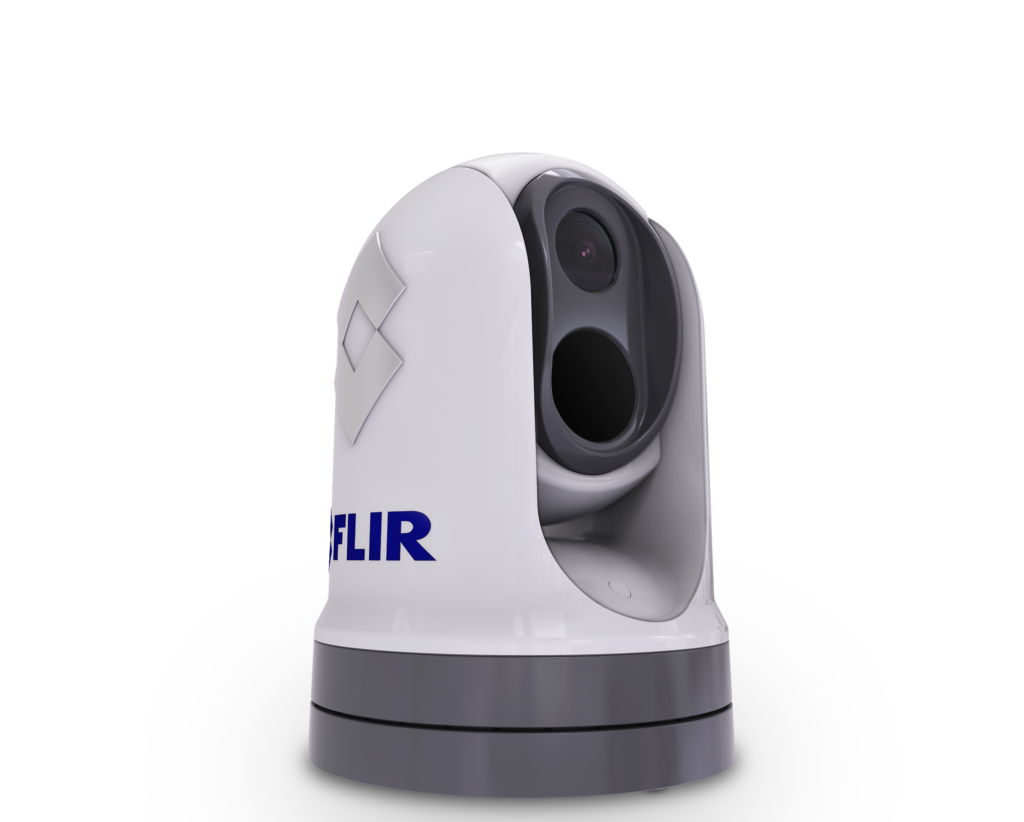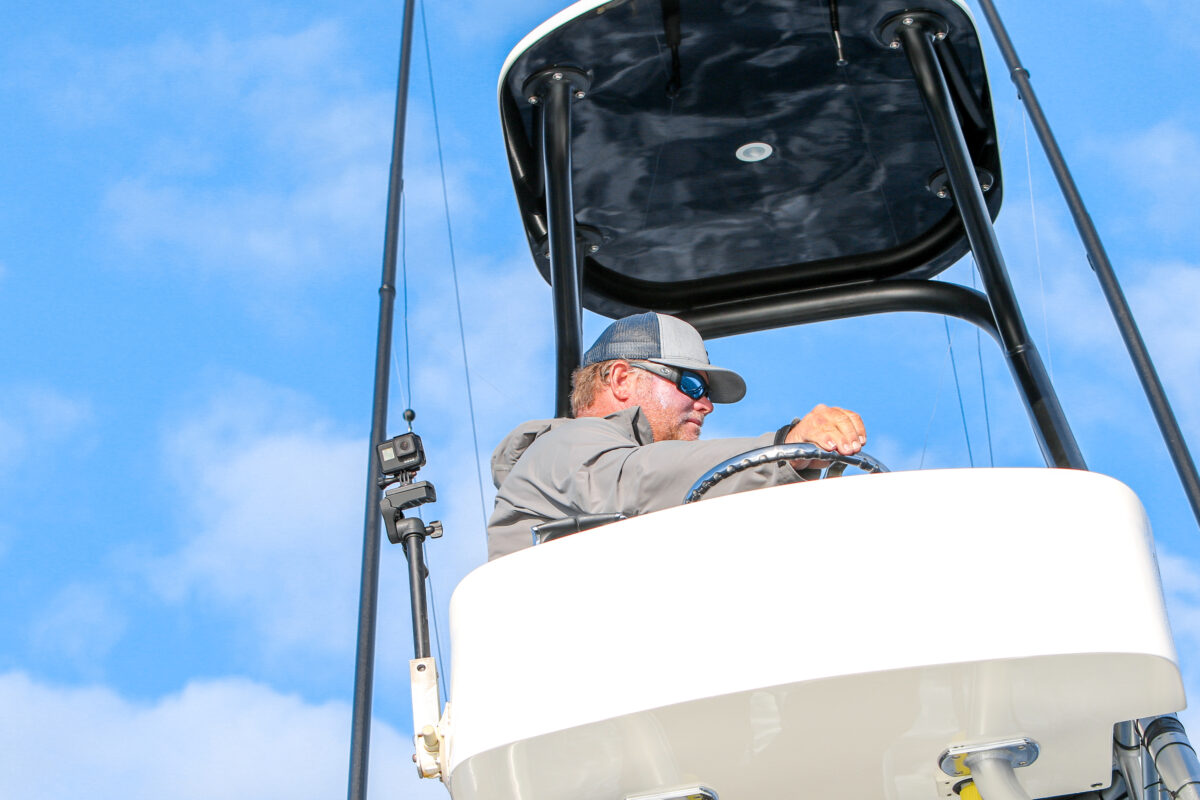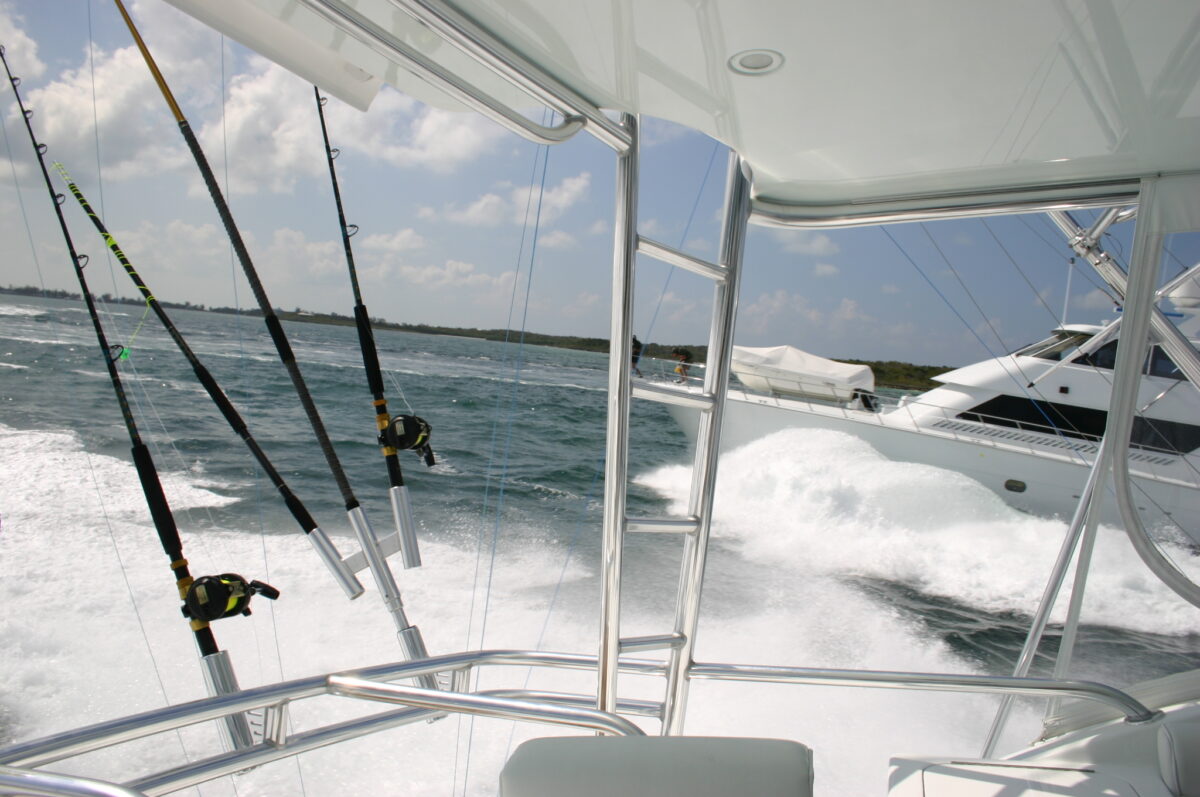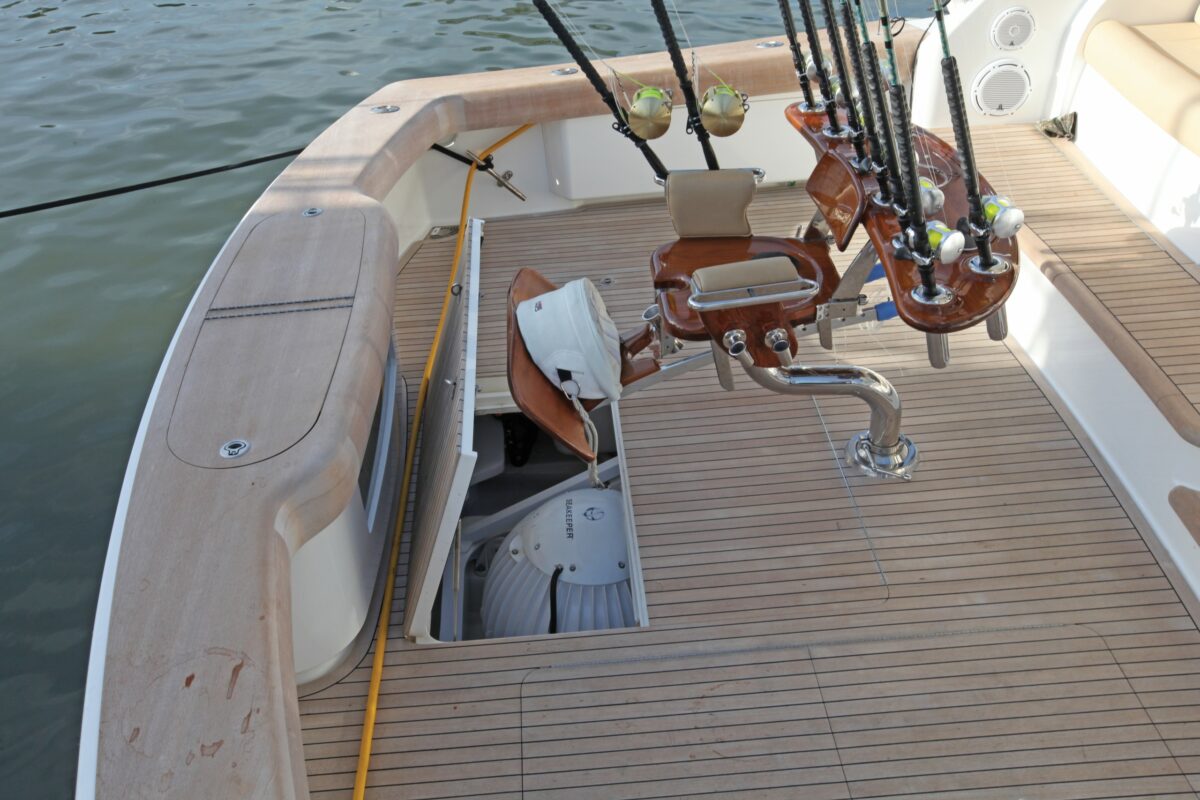Boating in the dark is often a necessity, usually on the way to or from a fishing spot, or due to an unexpected delay or extended voyage. Traditionally, using your GPS chartplotter and/or radar is a great way to know where you are and what is around you. Radar does a great job of displaying large objects like boats and land that reflect a radar signal. GPS chartplotters can show you where your boat is in relation to an electronic chart, helping you navigate to your destination. There are a few different types of nighttime-specific navigation tools that are available to boaters to aid with nighttime operations.
Radar
Radar is a great tool to use in limited visibility, even letting us “see” over the visual horizon. Furuno indicates the radar horizon is longer than the optical horizon by about six percent because of the diffraction property of the radar signal. Modern Doppler radars improve on the effectiveness of a traditional radar when it comes to navigational safety. A Doppler-style radar, also referred to as solid state, can be purchased from major marine electronic companies such as Furuno NXT, Garmin Fantom, Simrad Halo and Raymarine Quantum & Cyclone. These radars use the Doppler effect to calculate a radar target’s movement in relation to your boat’s movement.
If the radar determines the other object is stationary, like a buoy, jetty or pier, then the radar displays the target as a traditional return. But if the radar determines the object is moving in a direction that could put it on a collision path with your vessel, the radar usually differentiates this radar return with a different color, often red, or green if the object is moving away from your boat’s path. Each brand of Doppler radar may operate differently, but the basics are the same — the radar performs these Doppler calculations and gives you a much better idea of the moving and stationary objects picked up by the radar.
This technology can give even the most novice radar operator the confidence to understand their nighttime surroundings with relative ease. Remember, your radar works just as well in the day as it does in the night — you should use it whenever you need to improve your situational awareness.
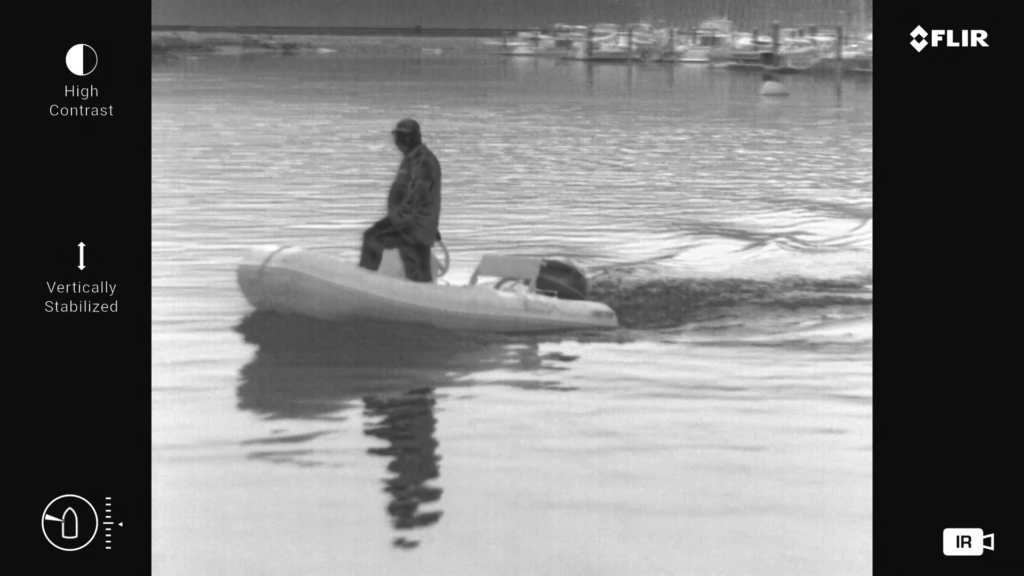
Light Bar
The LED light bar is a trending must-have for many boaters operating in the dark. Often used like the headlights on a vehicle, a mounted light bar can provide a large amount of light covering a wide area in front of the boat, illuminating your path forward. This is helpful when entering and exiting a confined or unfamiliar area, such as a marina, inlet, channel or other area where close visual navigation is critical. These modern light bars produce a lot of light with a little bit of power, with many size offerings for most any boat. A major drawback is that the light can be too bright when other boaters are nearby and can disrupt the vision of other captains. Diligent use is needed when near other boaters.
Another issue that could arise is that USCG Rule 20 specifies that only those navigation lights prescribed, or those that don’t interfere with those prescribed, may be used while underway. Once darkness falls, the ability to see through the dark is comforting and adds a layer of safety. There are technologies to help us see through the dark, without bright lights or interpreting a radar picture.
Traditional Night Vision
Traditional “night vision” is one of the original tools available to mariners, though not as popular as it once was. This night vision is the fuzzy green pictures you may have seen on military or police videos. First used in WWII, this consists of a camera sensor that intensifies the existing light (however little exists) or supplies its own near infrared light, to render the greenish image of what is in front of the lens. The green image was chosen by manufacturers because our eyes are most sensitive to green light, and it shows the most accurate user-friendly picture for humans to see.
This technology can sometimes offer more detail than other technologies because it responds to light more like the human eye does. These night vision systems have come down in cost and may be a great addition to your onboard gear. Since this night vision requires reflected light, the consumer-grade versions do not work well at long range, or when it is very dark, rainy or foggy. It is a good tool to read numbers on a buoy, see a wake in the water or other details as you would in the daytime. These devices come in many physical forms, the handheld binocular or monocular is the most popular and affordable for marine use.
Low-Light Camera
A low-light camera is like a conventional mounted video camera, sending a video feed to a dedicated monitor or MFD (multifunction display) at the helm. A low-light camera has a special CMOS sensor that can produce a video image that uses the ambient nighttime light and processes a video image that looks like what you might see in the daytime on a video camera. The quality of the picture relies on the amount of ambient light and the technology of the camera.
Thermal Imaging
The most sophisticated type of night vision is thermal imaging or thermal camera (often called FLIR, an acronym for Forward Looking Infrared). Thermal cameras rely on technology that senses extremely small temperature differences — not visible light. Consumer thermal cameras use a crystal lens to capture temperature and focus it onto a vanadium oxide microbolometer. This device converts the temperature measurement into electrical signals that are processed to display a video image. Because ambient light is NOT used by a thermal camera, the system can produce the same type of picture during the day as it does at night.
Thermal Imaging Then and Now
Thermal cameras were originally developed for and used in the military, police and firefighting markets. These original thermal cameras were very expensive and not popular with consumers. Today, many thermal cameras have become more affordable for boating, with fixed-mount consumer marine devices starting at $3,500 and handheld devices about $2,000.
The most popular marine thermal cameras are made by FLIR Systems, now a division of Teledyne and Omnisense Systems USA Inc. Both the FLIR and Omnisense cameras can integrate with today’s modern chart plotters. In addition to seeing the thermal picture on the screen, many chart plotter displays allow you to use the touchscreen to control the camera movements and settings. An interesting feature on some of these chart plotters is slew-to-cue, a feature that allows the chart plotter to control and keep the camera pointed to and tracking a specific object, such as a moving boat or a person in the water.
Uses and Limitations
Accident avoidance is an area where a thermal camera can help you see objects floating in the water since floating objects often have a different temperature than the surrounding water and therefore are easily differentiated in video image. Other objects such as boats, land masses, buoys, debris and people are also easily identified by their temperature differences. If you are using this system for search and rescue you will often be looking at cooler water for a warmer person and the person will be easy to spot due to the contrast of temperature. No other visual technology finds people in the water faster.
Thermal cameras often work in light rain or light fog, but heavier precipitation or dense fog can appear as a “wall” of same temperature, decreasing the usefulness of the camera during severe wet weather. These systems are good for long distance viewing but are not helpful in some situations, like reading numbers on a buoy. This is because the camera reads the temperature. So if the buoy numbers are the same temperature as the buoy, the system does not differentiate this, and the buoy appears without numbers.
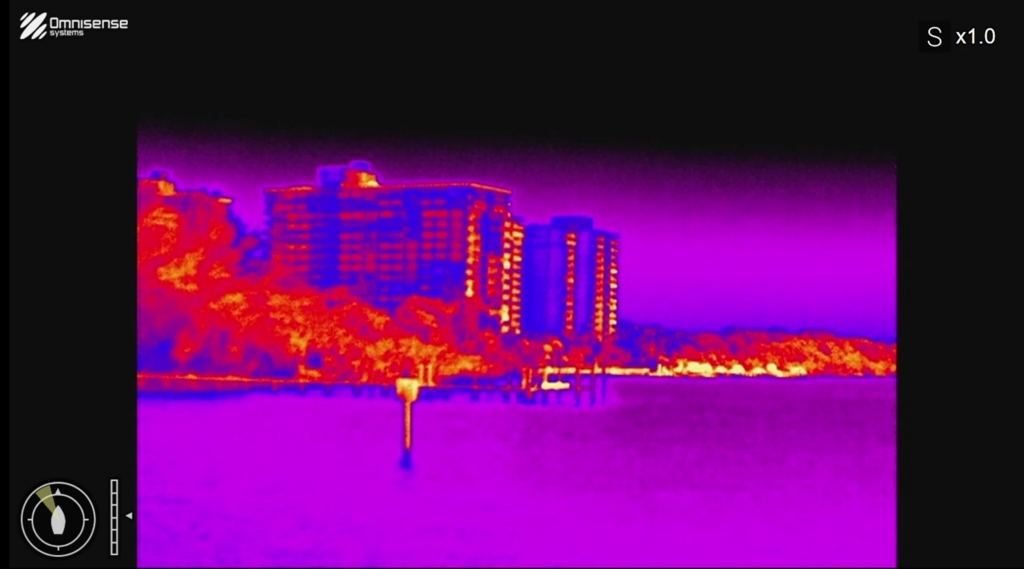
Omnisense Thermal Cameras
Omnisense is the newest manufacturer to offer marine thermal cameras. Their Ulysses line of marine cameras seem to have been inspired by FLIR’s successful size and design with new added features. All Omnisense Ulysses marine cameras have pan-and-tilt functions. The Omnisense camera is installed with a single small cable from the camera to a junction box remotely mounted a distance away. This makes cable runs through hardtops and towers easier than the numerous cables required by FLIR cameras. The junction box is where the connections are made for power, remote and chart plotter integration. Omnisense cameras are pre-programmed to integrate with Furuno, Garmin and Navico’s MFD.
Omnisense offers the Ulysses, Ulysses mini and Ulysses micro with options for a total of six different camera models. Interestingly, the lowest resolution Omnisense camera has a higher resolution than the comparable FLIR camera, 384×288 versus FLIR’s 320×240. Except for the base model, all Omnisense cameras are stabilized.
Flir Thermal Cameras
FLIR’s camera offerings have not changed much in recent years, the popular FLIR M232 low-resolution model comes standard with pan-and-tilt and is one of a dozen different models offered by FLIR. One overlooked model may be the M625, a high-resolution 30Hz fixed mount camera, perfect for the boater who does not need pan-and-tilt but wants a high-resolution picture for about one third the cost of the high resolution, stabilized pan-and-tilt model. The newest M300 series FLIR cameras now offer stabilization whereas in past models it was an option.
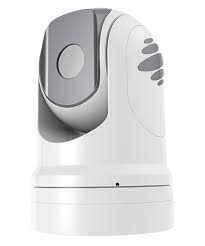
In Conclusion
Selecting the right thermal camera can be difficult if you are not familiar with the terminology. The good news: any thermal camera is better than not having one at all. The frame rate and resolution of the thermal camera combined with the video screen used to display the image from a camera can make a significant difference in picture quality, be sure to compare choices before making a purchase.
There are two popular frame rates available with marine thermal cameras: 9Hz and 30Hz. A 9Hz camera, the detector can create nine frames per second, while a 30Hz camera, the detector creates up to 30 frames a second, both maintaining the same thermal capabilities with the 30Hz producing a smoother picture. The U.S. government has export controls on thermal cameras with a frame rate higher than 9hz, therefore import and export restrictions affect supply, demand, and prices.
Most thermal cameras are very low resolution compared to the megapixel cameras we have in our smartphones. The typical marine camera commonly has either a low resolution of 320 x 240 or high resolution of 640 x 480, the higher resolution can provide a picture about twice as detailed as the lower resolution, viewing screen dependent.
Camera Upgrades
Pan-and-Tilt — Allows remote control of the camera’s orientation to pan horizontally and tilt vertically from a control station. A fixed mount camera is adjusted at the time of installation for optimum viewing and stays in a fixed position during operation.
Stabilization — Some thermal cameras offer a gyroscopic stabilization of the video output, effectively allowing the operator to see a steady video picture even when the camera is moving due to the motion of the boat.
Dual payload — This refers to a second camera installed inside the housing, recognizable by a second lens opening. This second camera is often a low-light, color and/or long-range video camera. The operator can choose the image depending on the circumstances. Thermal cameras are ideal for accident avoidance by their unique ability to show channel markers, shipping lane traffic, outcroppings of land, bridge pilings, debris, exposed rocks, other vessels and most any floating object.
Additionally, thermal cameras are great tools for shipboard security, man overboard situations, anti-piracy and other applications. If you are choosing a thermal camera without hands-on experience, the highest resolution your budget allows will always be a good option. Don’t fear the darkness.
